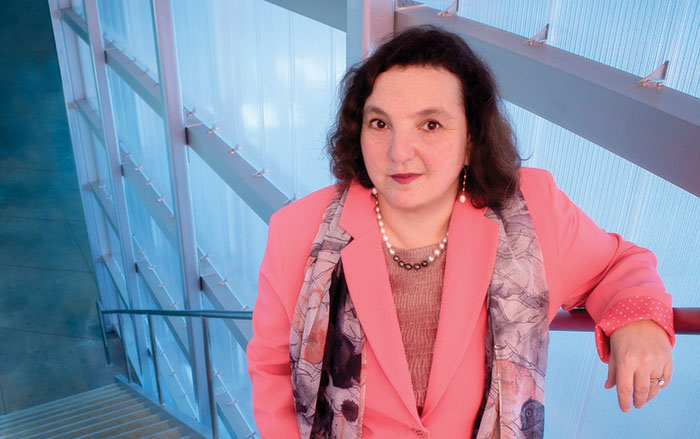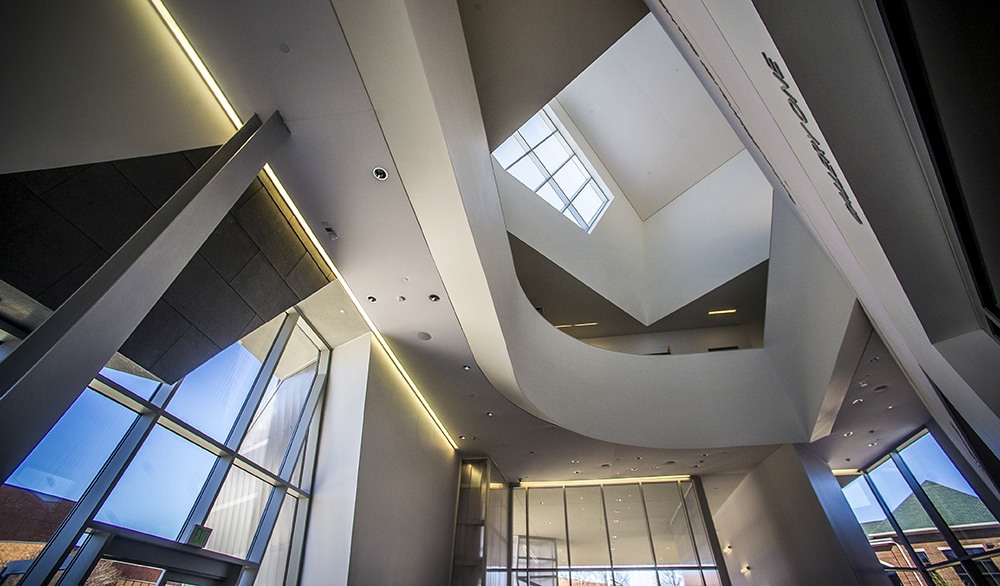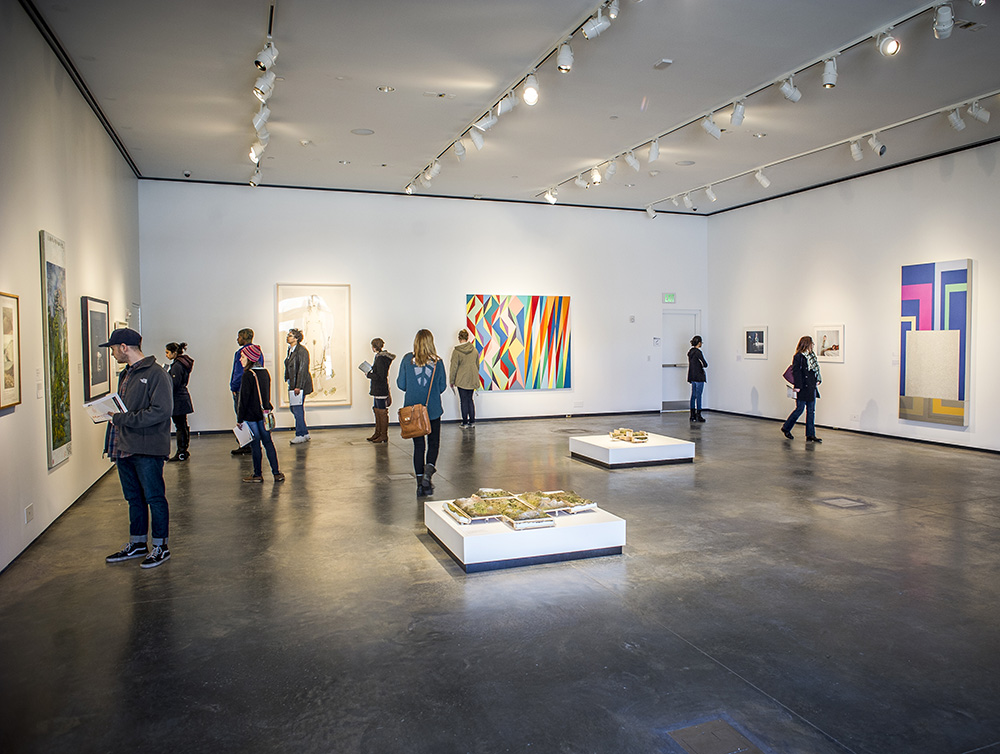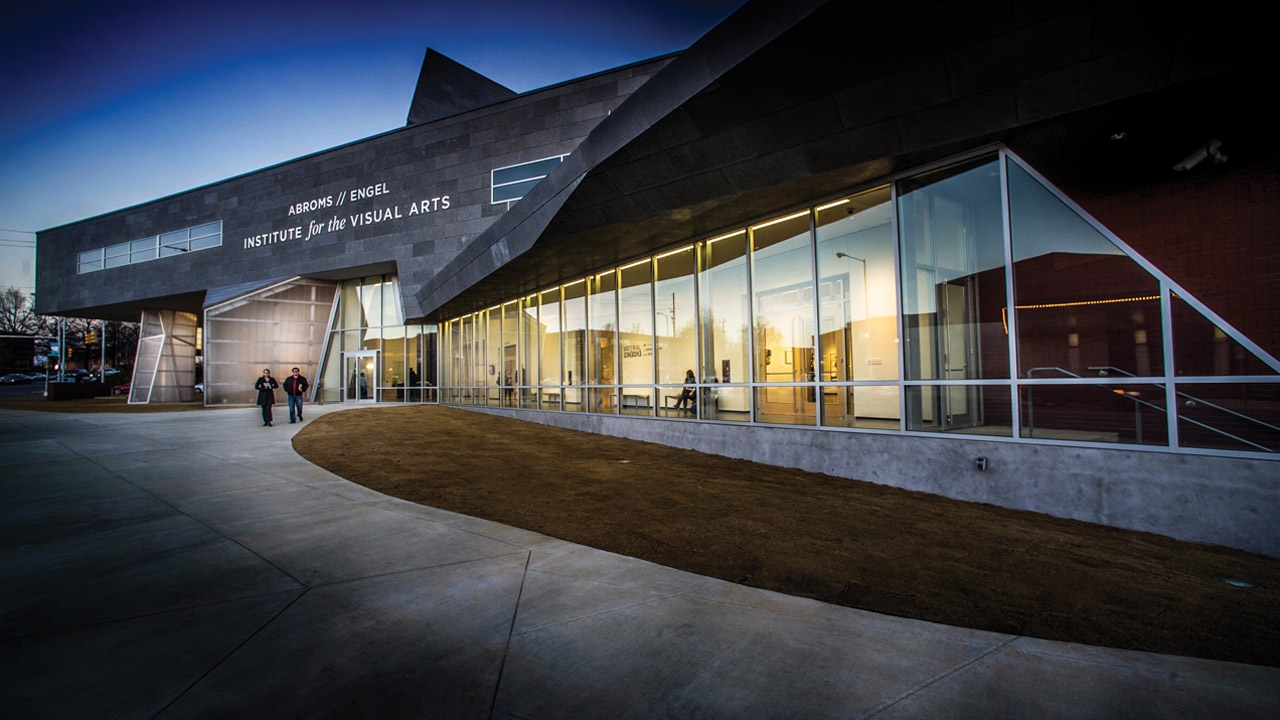It’s tough to fit UAB’s Abroms-Engel Institute for the Visual Arts (AEIVA) into a single frame. The architecturally striking facility, opened by the UAB College of Arts and Sciences in 2014, is an art museum and an anchor for UAB’s Cultural Corridor. It also houses classrooms and studios for the UAB Department of Art and Art History. For Lisa Tamiris Becker, M.F.A., AEIVA’s founding director, the building is a place of discovery—a research center like no other at UAB.
Layers of Meaning
Works of art are never fully finished. While the artist may have put down the paintbrush or chisel, art scholars add layers of context with each new interpretation, historical finding, and cultural connection. That’s precisely what happens at AEIVA, Becker says. “We can bring to bear the collective intelligence of a research university in our endeavors,” she explains. Art historians can collaborate with anthropologists and a curator, for example, to provide a whole new way to look at a collection of art.
“We have an experimental mission,” Becker says. “Here we can explore ideas and topics that are innovative and not yet in focus at other kinds of museums and galleries.”
 Lisa Tamiris Becker
Lisa Tamiris Becker
Growing Up with Art
Becker is no stranger to artistic innovation. Before arriving at UAB in 2014, she directed university art museums in Colorado and New Mexico. She also holds a degree in experimental sculpture, new media, and installation to complement her education in art history and theory. Cutting-edge art is something of a family tradition as well; in early 20th-century New York, her relatives were involved in the Ashcan School of painting—featuring scenes of urban life considered provocative at the time—and the evolution of modern dance choreography.
Some of Becker’s most illuminating encounters with art, however, came when she was growing up in Europe, where she had the opportunity to visit legendary museums with collections spanning centuries and continents. Encounters with cultures around the world reverberate throughout her research, which reveals the ways in which contemporary art builds upon the historical traditions of Korean, Tibetan, Latin American, Scandinavian, Arab, Greek, Jewish, and other cultures.
Birmingham is a perfect place for myriad cultures to mingle, Becker says. In addition to UAB’s international and cultural diversity, the city’s “significant history with human rights echoes globally. That makes Birmingham a unique place to explore a lot of social, historical, and political contexts, as well as aesthetic contexts, through experiences with art.”
 The Gail and Jeffrey Bayer Grand Atrium welcomes visitors to AEIVA.
The Gail and Jeffrey Bayer Grand Atrium welcomes visitors to AEIVA.Cultivating the Collection
Deep within AEIVA’s permanent art collection, Becker is discovering treasures: among them, large-scale Polaroid images made at UAB by famous photographers; historic prints from 18th- and 19th-century artists such as Piranesi, Daumier, and Hogarth; and remarkable modern and contemporary works on paper, including posters and other examples of graphic design. (Nine of the screen prints and 90 of the Polaroids featured in AEIVA’s “Warhol: Fabricated” exhibition earlier in 2015 belong to the permanent collection.) Now she is investing in those treasures by leading an effort to bring the storage and organization of the collection up to museum standards.
The collection is a key component of AEIVA’s research role. Original artworks can be brought into classrooms to serve as the centerpiece of discussions between faculty and students; they might also appear in exhibitions. “It’s a campus resource in the way that the library is a resource,” Becker says.
In addition to the art, Becker and her colleagues share their expertise. Recently, she visited a class focusing on Asian art to discuss contemporary Tibetan works. AEIVA’s staff, including Curator John Fields, help mentor art students as they bring to life their Bachelor of Fine Arts exhibition, the culmination of their undergraduate work. The facility hosts exhibitions, lectures, and dialogues featuring UAB art faculty and art experts from around the world as well.
Students also can gain experience with different aspects of museum and gallery work at AEIVA, from staffing visitor services to working with the collection to installing art in the galleries. In the coming months, one graduate student will work closely with Becker to learn about curatorial research.
A Cultural Force
Becker is excited to serve as a cultural ambassador for Birmingham. Already, she is planning a dynamic series of exhibitions highlighting internationally renowned artists who have rarely—if ever—shown their work in the city. (See the box below for details.) Everyone—students, faculty, staff, local residents, and visitors—is welcome to view these and all AEIVA exhibitions; entry to the galleries is free. This year, Becker also will implement a new membership program to build a “social and philanthropic community” around AEIVA, offering access to special programming and rewards at different levels. “We want as diverse an audience as possible,” Becker says.
Likewise, Becker wants to create catalogues of AEIVA exhibitions, which will promote UAB’s contributions to knowledge in art history and art interpretation. While the public enjoys these art books as keepsakes, catalogues “are instrumental to our national and international research reputation,” Becker says. In addition, “they extend the life of each exhibition into the future and introduce them to additional audiences.”
With its focus on discovery and new ideas in art, AEIVA is poised to make an impact, Becker says. “We’re in a moment when the visual arts are very powerful,” she explains. “Contemporary art, in particular, has become a major cultural force.”
Here at home, she sees AEIVA as a crucial part of the “ecosystem” that includes the Birmingham Museum of Art and local art galleries and organizations. “There’s enormous enthusiasm in Birmingham right now, and people want to see the city develop its cultural capacity and cultural resources,” she explains. “People are excited by what’s here, and they want to see it all move forward. It’s fun to be part of that.”
 Students and visitors explore an exhibition in one of AEIVA's three galleries.
Students and visitors explore an exhibition in one of AEIVA's three galleries.Future Frames
A Glimpse of AEIVA’s Upcoming Exhibitions
Fall 2015: David Maisel/Black Maps: American Landscape and the Apocalyptic Sublime
2016: Enrique Martínez Celaya
2016: María Magdalena Campos-Pons
2016: Luis Cruz Azaceta
• Learn more about AEIVA and its exhibition schedule.
• Become a member of AEIVA as an individual or a business.
• Give something and change everything for the arts in Birmingham with a contribution to AEIVA.


